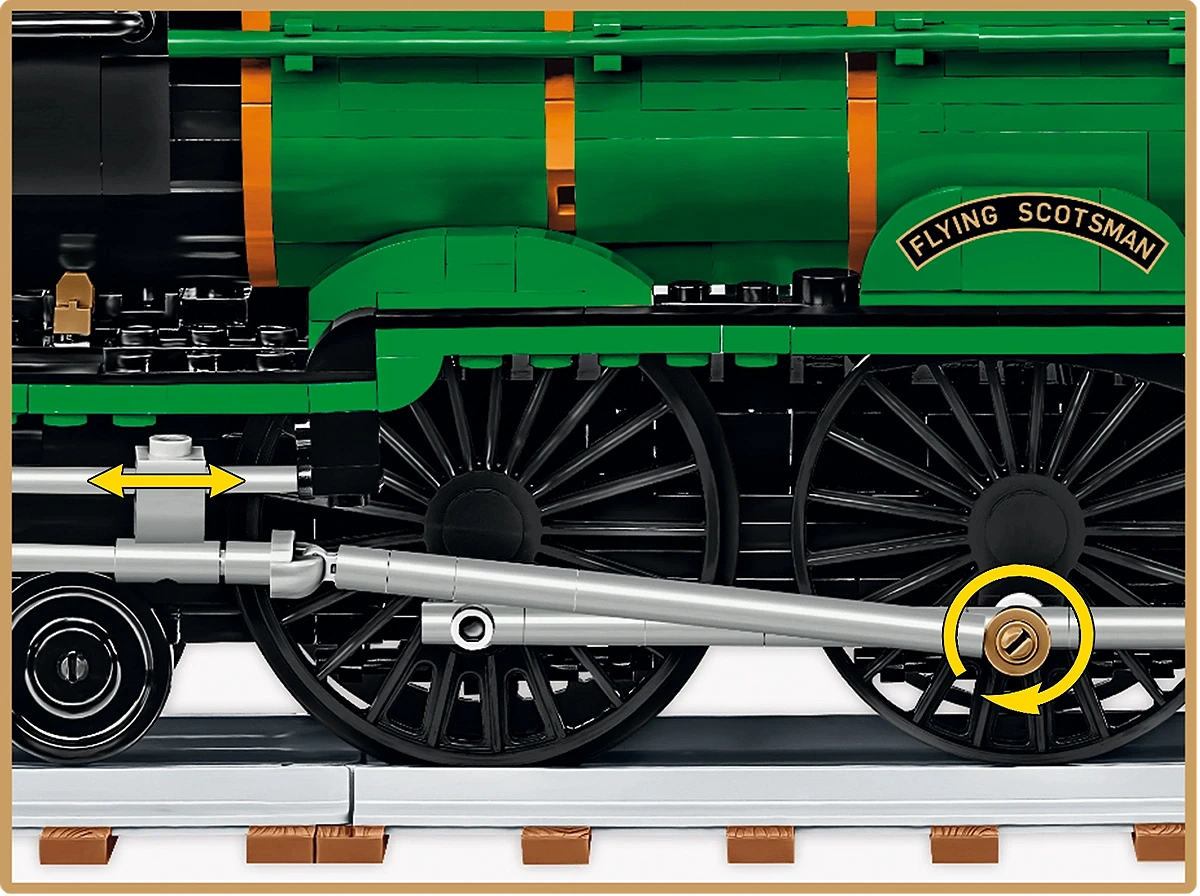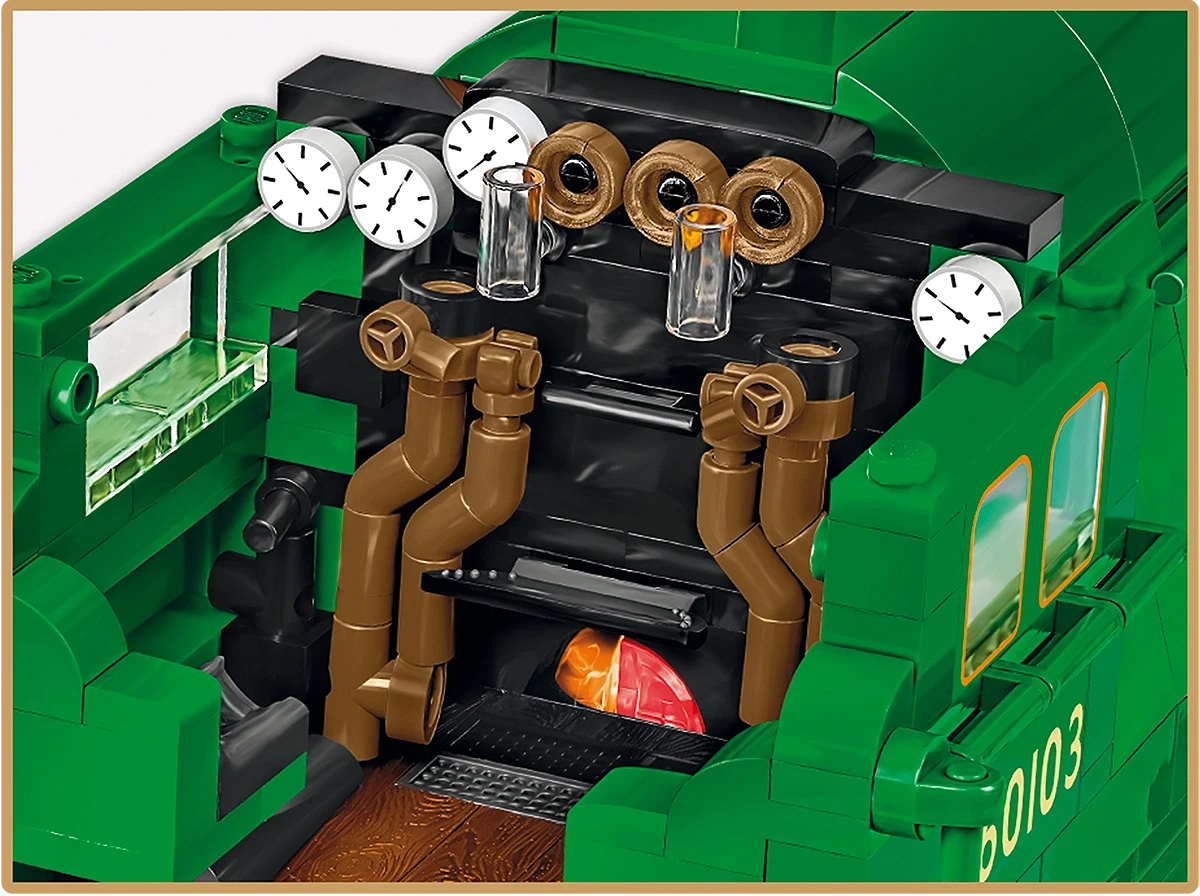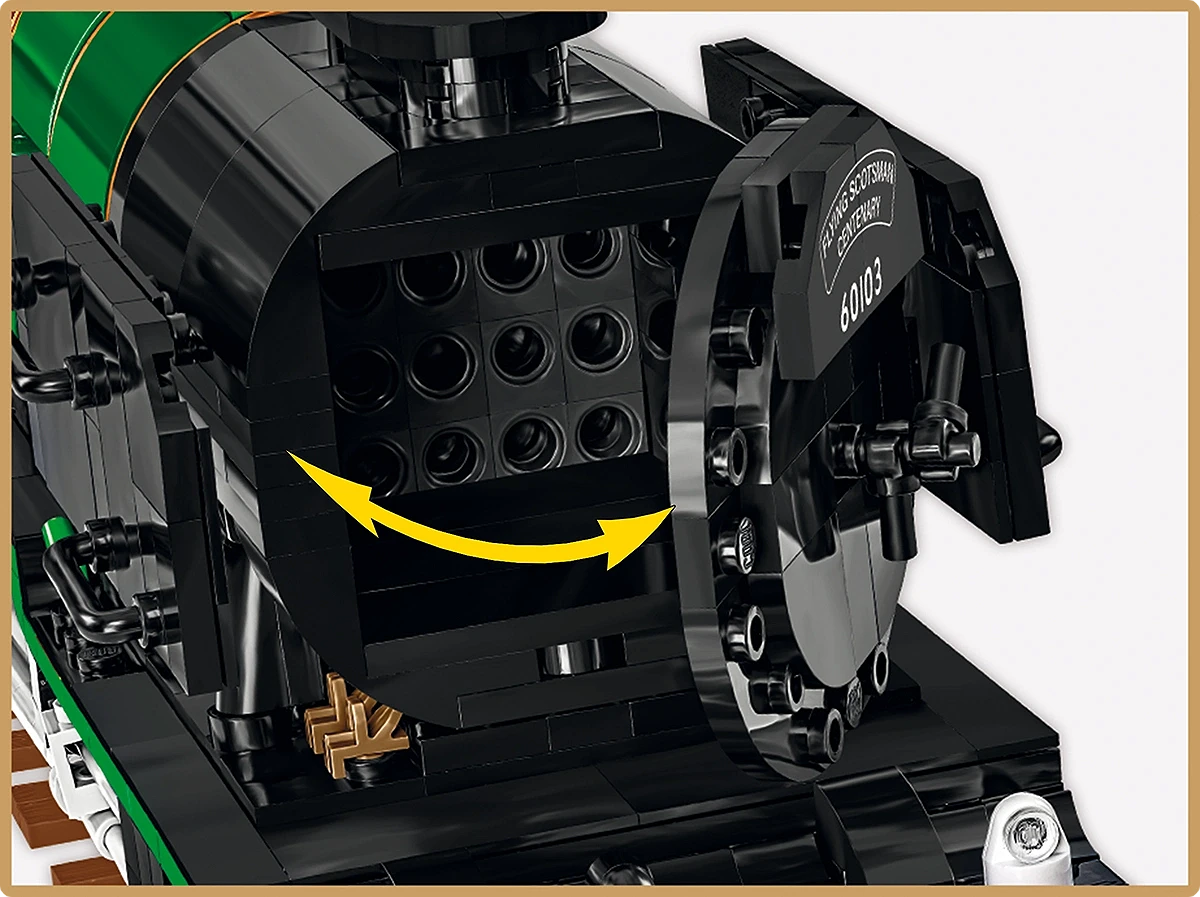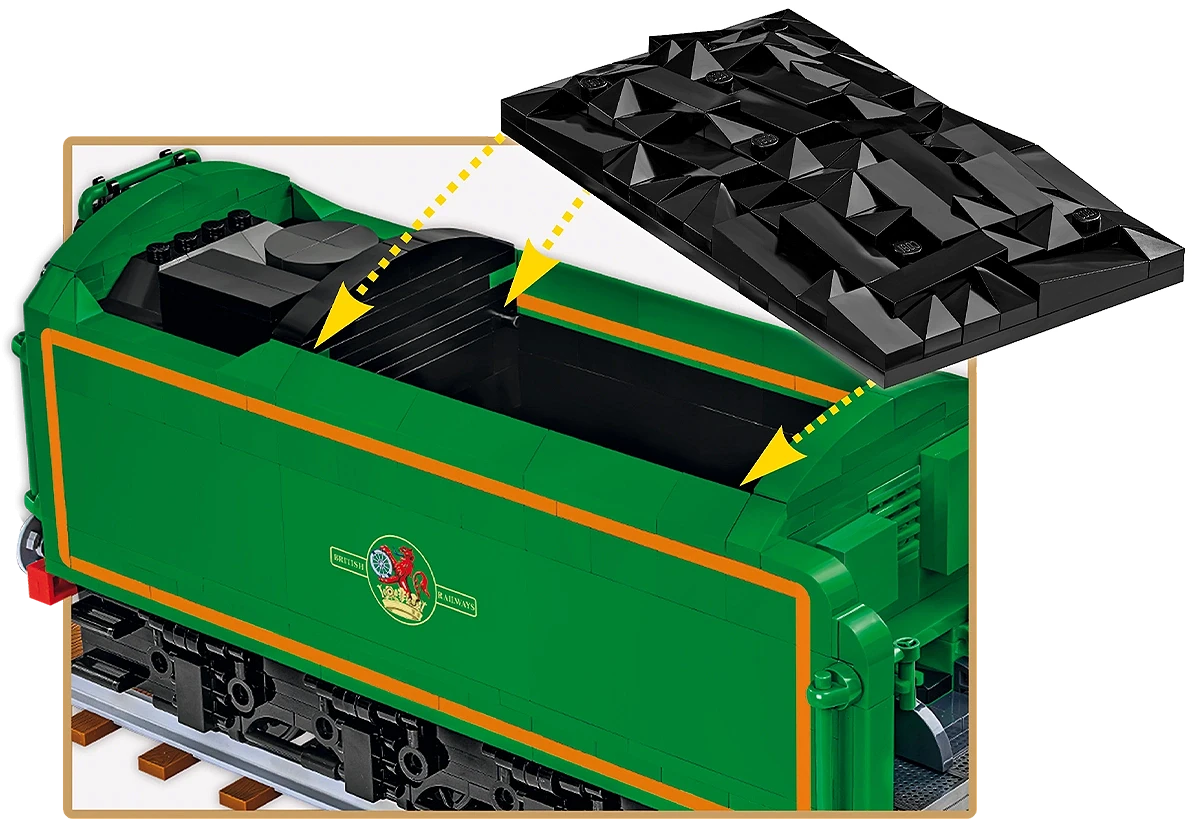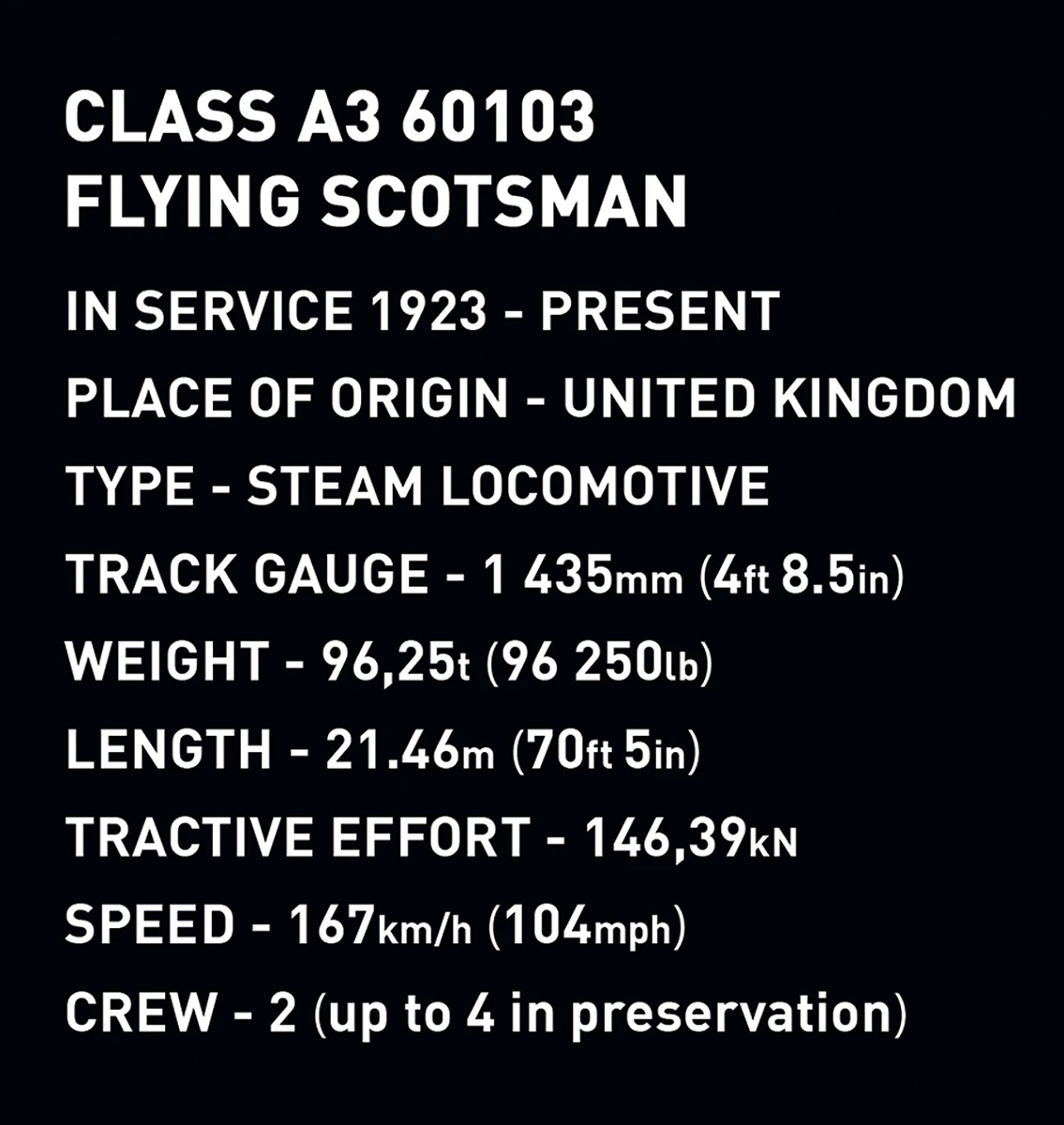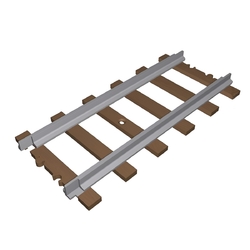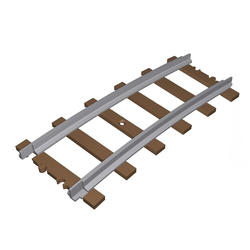A model kit of the legendary British steam locomotive A3 No. 60103 FLYING SCOTSMAN® including an attached coal tender. Thanks to the removable roof, it is possible to look into the equipped engine room. The parts imitating the fire in the locomotive's furnace are a beautiful detail. The model's wheels are coupled and rotate when moving. You can also look into the steam boiler or the attached tender. The package includes five segments of realistic-looking track with sleepers in wooden decor with a total length of 66 cm. The track segments have holes for possible assembly to the base of a railway diorama. Also included is a figure of the engine driver and stoker with a shovel. The model is fully compatible with the track system of other kits and handles the R88 curvature. The model is equipped with towing hitches so that other cars can be attached to the locomotive. The kit is manufactured under official license from SCMG Enterprises Ltd.
Show more
0 %
(0 Ranking)
3 749 Kč
pcs
Add to Cart
In stock - ready to ship (2 pcs)
| List Number: | COBI-6292 |
| EAN: | 5902251062927 |
| Warranty: | 24 months |
| Manufacturer: | COBI |
| Loyalty Points: | 50 |
| Price excluding VAT: | 3 098,68 Kč |
Description
Parametres
Files and Links
Discussion
Reviews

Did you know: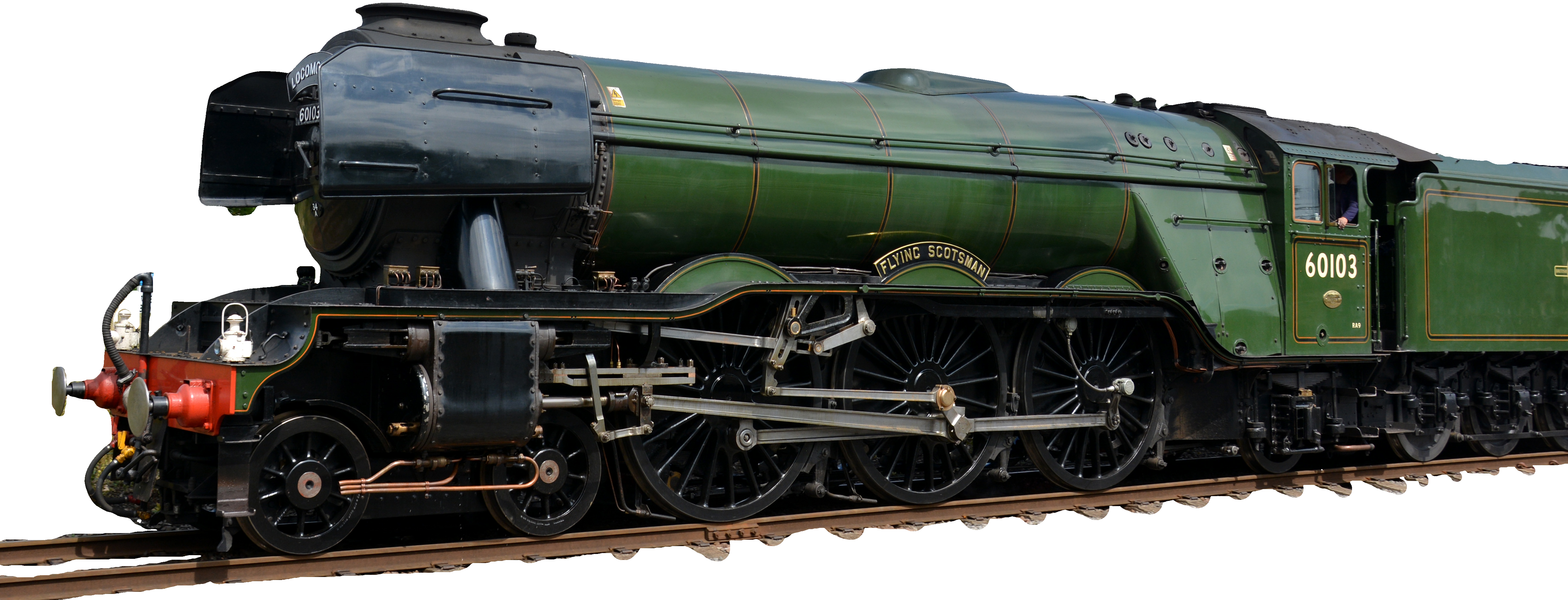
- The steam locomotive Class A3 Flying Scotsman® is a true legend of British engineering, and one of the few technical monuments to bear the title “British national treasure”.
- Mass production of steam locomotives began in 1923 after approval by the British Parliament. A total of 297 units were ordered.
- This unique machine was built in 1923 by Doncaster Works under the direction of chief designer Sir Nigel Gresley.
- The locomotive was designed for fast runs on the long-distance routes of the East Coast Main Line and later for the service named The Flying Scotsman, from which the locomotive took its name.
- In 1924 it carried passengers on the London King’s Cross ⇔ Edinburgh Waverley route. For this service it was painted in the characteristic green livery. Five A3 class locomotives were operated continuously on this route.
- The locomotive covered 631 km in 8 hours 3 minutes. Upon arrival, the driver and fireman replaced the empty coal tender with a full one and the train set off again. Water was replenished during stops en route.
- The FS was a powerful and fast locomotive. On 30 November 1934 it reached 161 km/h, becoming the first steam locomotive in the world to officially exceed 160 km/h.
- During the war years from 1943, it was repainted in black according to military regulations. The beloved “Apple green livery” was restored only in 1947.
- It was almost scrapped, but in 1961 railway enthusiast Alan Francis Pegler bought it for £3 500 (roughly 2 640 000 CZK today), selling all his shares in a rubber factory to pay the purchase price.
- The locomotive was thus saved, and on 14 January 1961 at 13:15 it departed London King’s Cross for Doncaster for restoration. Over 400 journalists from many countries witnessed its departure.
- During its 40 years of service, the Flying Scotsman ran 3 231 563 km with only one three‑week maintenance break.
- Restoration was completed in 1963, and about 8 000 railway fans came to see its first run to Birmingham.
- It even went overseas. The locomotive was sent to the USA to promote British exports, running on the Boston ⇔ Atlanta route. Initially successful, revenue later dropped by 90 % after competing lines opened, and the poor engine ended up in storage for unpaid debts. Fortunately, another rail enthusiast redeemed it, and it returned to Britain via the Panama Canal.
- Today the locomotive is operational and part of the National Railway Museum collection in York.
- Does this machine remind you of Thomas from the animated series? You’re right! Author Wilbert Vere Awdry was indeed inspired by the Flying Scotsman®.
Technical specifications of the locomotive: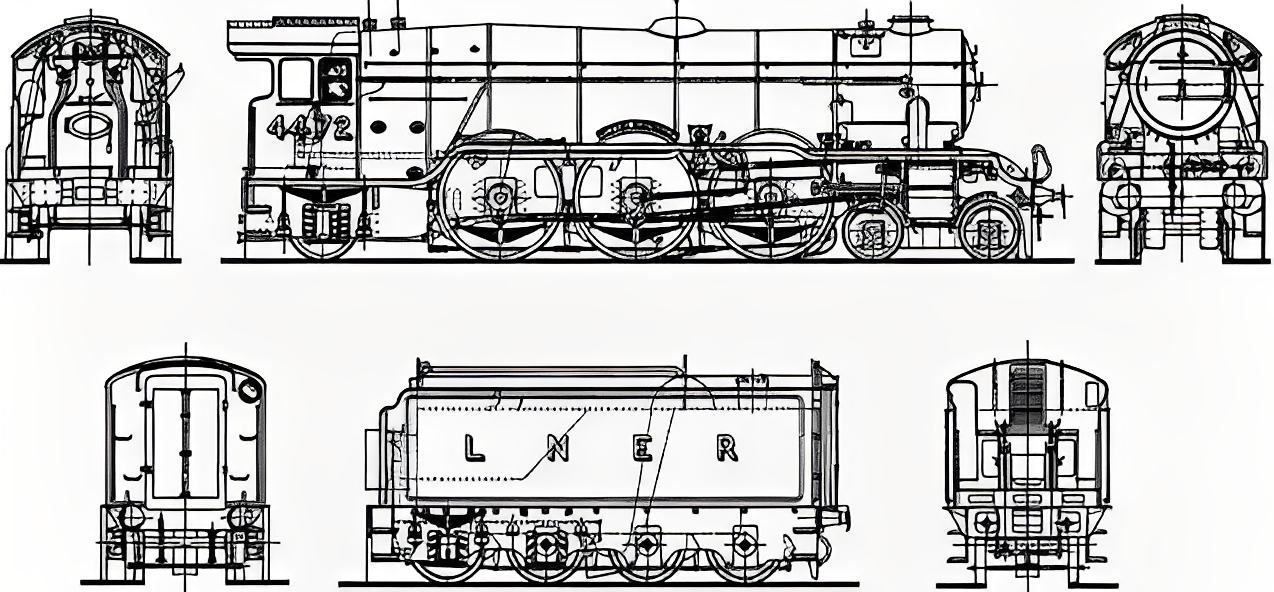
- Dimensions: length 21.34 m, height 3.96 m, gauge 1435 mm
- Weight 96 250 kg
- Grate area 3.83 m²
- Steam engine power 1 491 kW at 15.2 bar
- Maximum speed 167 km/h
- Tractive effort 146.39 kN
- Max. trailing load 600 000 kg
- Crew 2
Technical specifications of the Gresley tender:
- Length 6.4 m, width 2.74 m, height 3.99 m
- Number of wheels 8
- Total weight 58 700 kg
- Coal capacity 9 091 kg
- Water capacity 22.7 m³
- Maximum approved speed 145 km/h
Alan Pegler on the Flying Scotsman® 1974:
"I do not regret buying her. It was a life‑changing decision and I’d kick myself if I hadn’t. I can’t say I’m indifferent to having spent every penny I had—having to sell my house, cottage, my flat in Italy, my Bentley and even my Volvo, and be left with only what was in my pockets. But life is about embracing both successes and failures."
| Version (series) | 07/2025 |
|---|---|
| Scale | 1 : 35 |
| Recommended age | 12+ |
| Number of figurines | 2 pcs |
| Number of pieces | 2677 pcs |
| Package weight | 2840 g |
| Box dimensions | 55 x 32 x 12 cm |
| Dimensions after assembly | 66 x 10 x 13 cm |
| Collection | Historie |
| Contains luminous blocks | No |
| Material | Plastic |
| Compatible with other brand of kits | Yes |
Discussion is empty.
There is no review for product yet
Other categories
Related Items
Last viewed products













